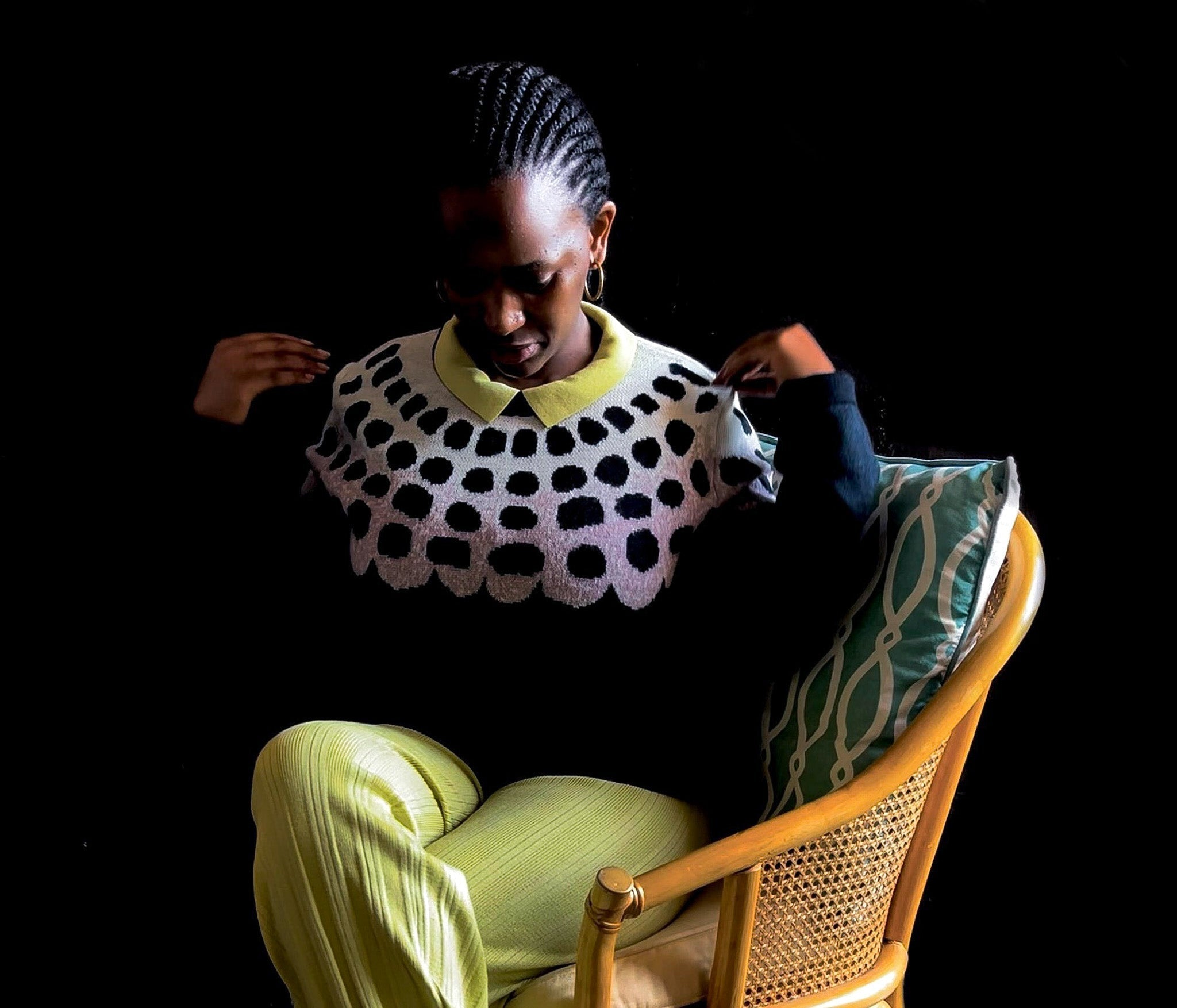For our sixth collection, 'Living with Contrast', we approached Johannesburg based multidisciplinary artist, Mbali Dhlamini, to collaborate on our Artist's Sweater. We chatted to her about childhood memories, working with FIELDS and her artistic practice...
Do you recall what first sparked your interest in art and the moment you decided to pursue art professionally?
I can’t say I recall, but I have memories of my childhood dreaming, drawing and always building like any other child. It was only after I won a primary school art competition that I saw my interest as something more than a hobby. This tiny win inspired me to see myself as an artist one day even though I had little understanding of what that meant. The professional part comes later as the vision becomes more tangible.
How does visual research inform your artistic practice?
Visual research is part of my practice, it is a methodology I use to inform and shape my work so it is, therefore, a primary language in my work.
You’ve recently completed a residency in Switzerland, could you tell us a bit about that experience?
I spent some time in Geneva, researching archival material from the Swiss missionaries. I staged a site-specific discourse with archival material from the World Council of Churches. It was a wonderful experience to be able to engage and work directly with the material but also difficult moment as the material is heavy, violent and sensitive.

How did your collaboration with FIELDS come about?
Mikael invited me through an introduction made by Keitu Mamabolo. Hey Keitu 😀
How did you interpret the fundamental message of ‘Living with Contrast’ for this collaboration?
My work engages with contrasts, visually and thematically. I think this is also one of the elements FIELDS picked up from my work. For the collaboration the use of high contrasting colours was key and using a design element that allowed the theme to play out in jacquard knit. Me and Mikael spent time discussing the theme, colours and design. Which was great.

What do you hope the wearer feels when putting your work on their body?
The figure, representational and non representational is an essential element in my artistic practice. There is an interesting thing that happens with this collaboration and how the sweater positions the wearer within the frame of the design. I do think this effect will play out directly with each wearer depending on what is evoked. The design borrows and references past and current cultural practices in a multi dimensional way. Presentation comfort and maybe discomfort.

How do you feel about your work being translated into a wearable piece?
The collaboration translates the original artwork carefully and doesn’t take away the essence of the original piece. I am pleased with how the piece looks and am interested to see how the wearers position themselves within the frame of work.
What are you working on at the moment?
The collaboration translates the original artwork carefully and doesn’t take away I currently have a solo exhibition titled “Go bipa mpa ka mabele” with Sakhile & Me a gallery in Frankfurt. I also have research trips and a residency coming up in the following weeks.

An Ode to Ukuhlamba II, Photograph - 2020, Digital Print on Archival Paper
What do you look for when investing in a piece of clothing?
I look at the design, cut, material and colour to see if this would be an item I could wear and enjoy for a number of years.
What does fashion mean to you?
I am more interested in individual style rather than fashion, if fashion in this instance is related to the latest trend.

Favourite city in the world?
Dakar, Senegal.
All-time favourite artist?
Judith Mason.
What would you never wear?
Gosh…pumps.
Your favourite piece from the FIELDS collection?
Cotton denim weekend trousers.
Being an artist in South Africa is….
Yoooo...
...as diverse as this country is with all its politics.
What are you listening to at the moment?
Snoh Aalegra.
This interview has been edited for clarity. The banner image and images of artworks are courtesy of Mbali Dhlamini.

